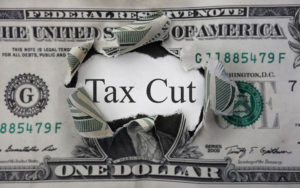

 The impact of the new U.S. tax law is credit positive for U.S.-based insurance companies and will boost profitability for many of these firms, particularly those that have been paying high effective tax rates, Moody’s Investors Service says.
The impact of the new U.S. tax law is credit positive for U.S.-based insurance companies and will boost profitability for many of these firms, particularly those that have been paying high effective tax rates, Moody’s Investors Service says.
What’s more, the Trump tax cuts will also make U.S. insurers more competitive with their global counterparts, according to Moody’s. However, buyers should not expect big price cuts as a result.
“We do not expect a material shift in the pricing of P/C products as a direct consequence of tax reform because risk-adjusted returns by product are based on multiple factors, including capital requirements, competition, loss cost trends, expenses, the cost of reinsurance and taxes,” says Siddhartha Ghosh, a Moody’s vice president.
Moody’s says that although the new tax law is credit positive for U.S. property/casualty insurers and reinsurers, there are provisions that are not so favorable to non-U.S. companies.
Moody’s says the base erosion and anti-abuse (BEAT) tax is credit negative for non-U.S. insurers and reinsurers whose U.S. subsidiaries transfer significant premiums to their non-U.S. affiliates. The report adds, however, that companies have some options to mitigate the impact of the BEAT tax, such as retaining more business in the U.S., supported by higher U.S. capital levels or having an affiliated non-U.S.-domiciled carrier elect to become a U.S. taxpayer. Nevertheless, non-U.S. (re)insurers are likely to incur U.S. corporate tax on a higher portion of their U.S. business, potentially reducing the profitability of Bermuda-based insurers and reinsurers, according to Moody’s.
Moody’s analysts said life insurers are expecting a decline in their company action level risk-based capital (RBC) ratios primarily driven by the write-off of net deferred tax assets, which most life insurance companies have. In addition, if the regulators were to incorporate the lower tax rates into the required capital calculation, RBC ratios would decline further. While the median RBC ratio has been robust in recent years at over 450 percent, Moody’s estimates that the life industry’s aggregate median RBC ratio could fall by a total of 70 to 100 percentage points in a worst-case scenario.
According to Moody’s, how it will incorporate an RBC decline into its rating process will in part depend on how regulators implement the change. Should RBC ratios decline below a rating driver threshold, Moody’s expects to provide a transition period for affected companies to rebuild and stabilize capital adequacy, or potentially to lower the threshold, although by a modest amount. Further, most insurers will enjoy the economic benefits of paying lower taxes through increased profitability and cash flows, which will help offset the decline in regulatory capital adequacy ratios over time.
Source: Moody’s